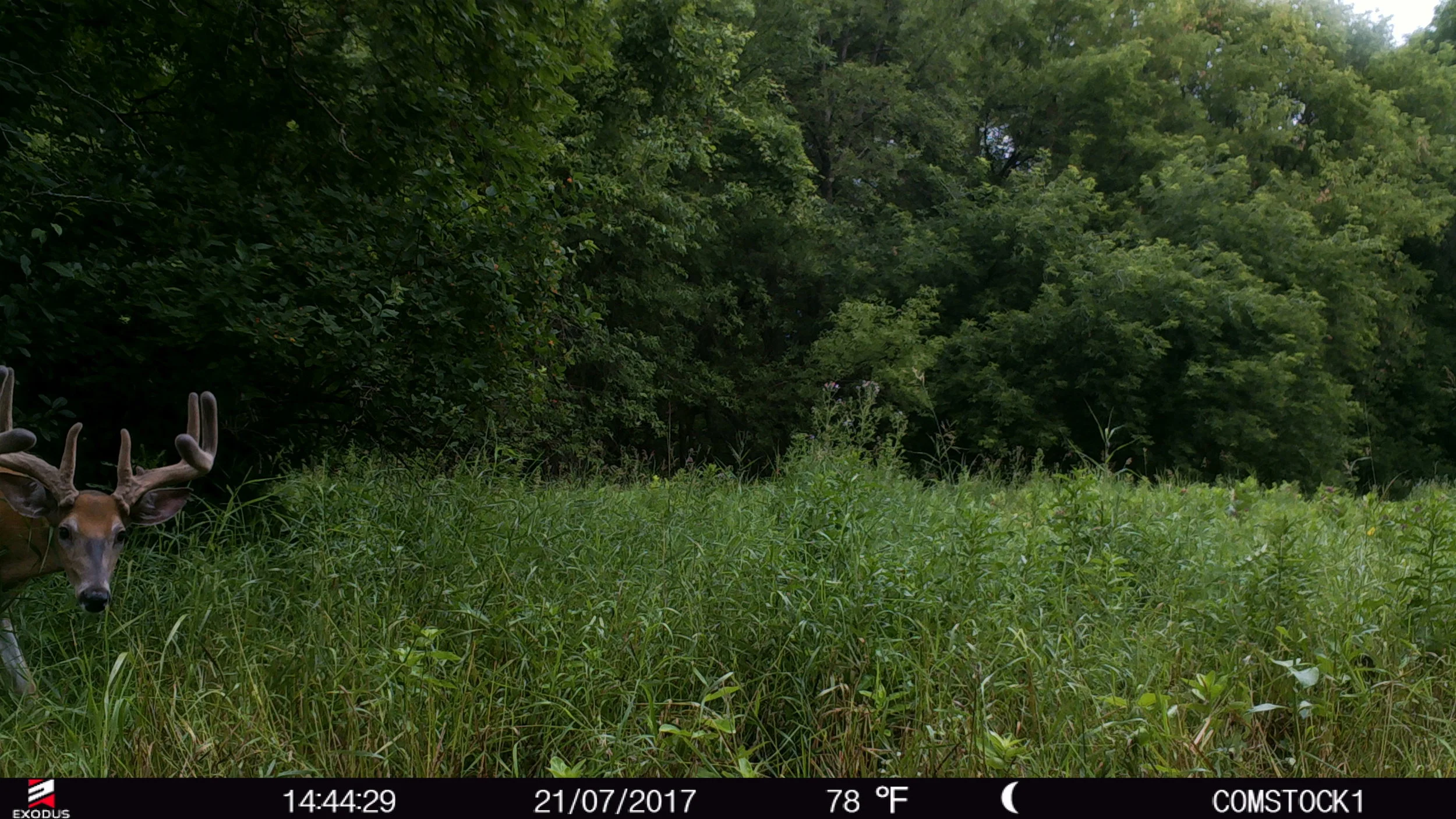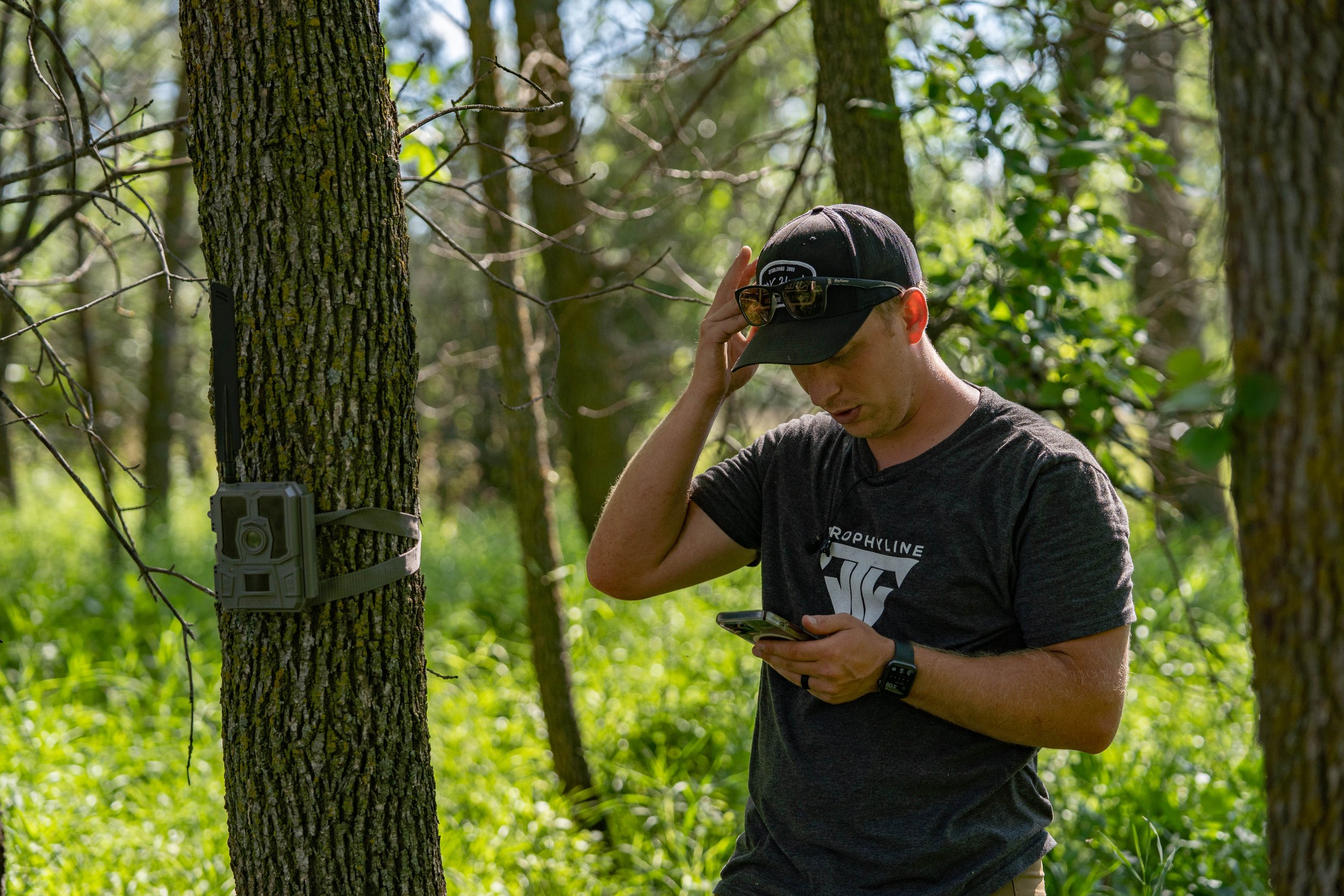By Alex Comstock
Do you know what my wall would look like had I harvested every mature buck I've gotten trail camera pictures of? I wouldn't have any room for more bucks. Or even if I had harvested every mature buck that I've gotten over 100 pictures of...that would still be a long list! The point I'm trying to get across here is that getting pictures of a mature buck and harvesting him are two things that can be worlds apart. I think to some hunters, this point is obvious, but to some, it might be a helpful reminder that there can still be a long way to go to harvesting a buck even after capturing many photos of him. The challenge is how do you go from pictures to a blood trail?
Analysis
The biggest problem I see from others and I as well am surely guilty of this over the years is taking a trail camera photo, or a series of photos for face value. That means you don't look into anything further than where a buck was at what time based on a trail camera image. You can gather so much information from trail camera images, but it can take some leg work to do this. Try and figure out where a buck is coming from and where he is going to based on an image. Is he consistently showing up in the evening always coming from the same direction? In this case, you can probably place a bet that he is coming from his general bedding area. Can you take to a map, and hypothesize where he's bedding? Is he showing up on camera just after dark? In this case, can you backtrack a little bit, and get another camera up to see if you can get him in daylight in another spot? These are all questions you should be asking yourself.
Another thing you should be looking at is conditions in which a buck is moving. A great tool for this is DeerLab, a photo management software that can help you organize how and when a mature buck is moving. Using a tool such as this to help educate yourself on when a buck is moving in daylight based on conditions could be a deciding factor in how you hunt him, and ultimately, if you get a shot at him.
DeerLab is a great tool to help understand what conditions bucks are moving in daylight.
Take a Look in The Past
One of the most underrated trail camera strategies that I've hit on before is understanding how bucks have annual patterns that can be much more reliable to hunt compared to trying to get a pattern on a buck based on data from a couple weeks before. I've seen it first hand, and have heard a multitude of stories of a buck showing up on trail camera in the same spot as the year prior on the same day, within minutes of his appearance the year before. Below, I'll outline two different scenarios in which annual trail camera data can help you tremendously.
Scenario 1: So let's say you've had a buck on trail camera for the past couple of years, and this coming season is the one you want to send an arrow through him. In this scenario, we'll say the buck is primarily nocturnal in your area, but if you look through pictures last year and the year before, you notice that this buck showed up in daylight the last week of October both years, and then disappeared until late season. He likely doesn't move far early in the year, knows when the first does will come in heat in the immediate area (hence why he is showing up in daylight the last week of October) and then travels during the rut to find more does. So what does this tell you? In this certain scenario, I would hold off on hunting him until that last week of October, and then based on conditions, and where you got him in daylight last year, I'd make my move. This will easily be your best time to kill him. Odds are he will show up again in daylight within a day or two of when he did the last two years.
Scenario 2: In this second scenario, we'll say once again you are after a buck this year and you have trail camera photos of him throughout the season last year. But in this scenario, the buck showed up sporadically during daylight throughout last fall. In this situation, I would go back to check the weather forecasts for every time he moved in daylight. This is where DeerLab particularly comes in handy, because if you input your trail camera photos, it will do all of the work for you, create nice looking graphs, and will help aid you in this process. Either way, if there is any type of pattern, hone in on it, and use it to your advantage this season. Opposed to waiting to get him on trail camera in daylight, and then trying to make your move, you can be one step ahead. If the buck in this scenario showed up last year in daylight 75% of the time on a NE wind when the barometric pressure was above 30, if you get conditions like that this fall, you know what you need to do.
Conclusion
Getting trail camera photos of mature bucks isn't the easiest thing in the world. And then to put them on the ground is exponentially tougher. But if you can take the information from the trail camera pictures that you do get, and make a solid game plan, you never know what could happen.
































